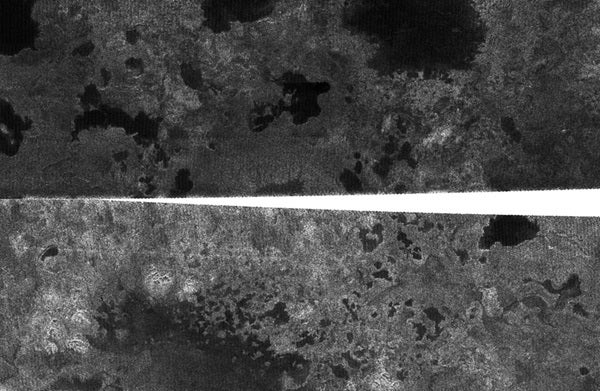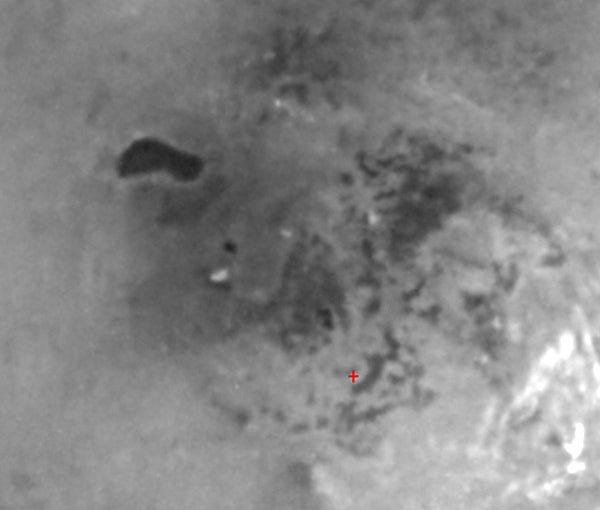For decades, scientists have suspected Saturn’s planet-size moon Titan of hiding secrets. Atmospheric models predicted methane or ethane might exist as bodies of liquid, perhaps ponds from methane drizzle, on the moon’s super-chilled surface. Now, scientists think they’ve found such lakes. On July 21, the Synthetic Aperture Radar system aboard NASA’s Cassini spacecraft peered through Titan’s orange fog and imaged a region in the northern hemisphere. The images clearly show dark, well-defined areas linked with channels and embayments.
The newly identified areas are completely devoid of variation, leading researchers to believe they are looking at smooth liquid surfaces. “The evidence is largely morphological,” says Cassini team member Rosaly Lopes. “We’re comparing the area to the great lakes of Minnesota. It’s the most exciting pass we’ve had so far. Finally, we have a source of the methane. Dozens!”
When Cassini settled into saturnian orbit in 2004, it dropped Europe’s Huygens probe into Titan’s atmosphere. The probe’s camera showed what appear to be dry river systems, and other instruments detected liquid methane under the moon’s surface and in the air. Meanwhile, Cassini’s radar team mapped dry basins and river valleys all over Titan. But where were the lakes? “We had all this speculation about where the [liquid] methane was and where the evaporation was coming from,” says Lopes.
The lakes range in size from a few miles to 19 miles (30 kilometers) across. They are in a region of Titan between 75º and 80º north latitude. Many are egg-shape or curved, but several have the appearance of liquid-filled calderas (volcanic craters).
The only other lake-like feature found so far lies near the moon’s south pole. It is a kidney-shape dark area spotted by Cassini’s infrared imaging system in June 2005. Significantly, this lake was near a storm front of methane clouds, lending support to the idea that a methane cycle exists on Titan similar to the Earth’s water cycle.
Data up to now has only hinted at this hypothesized methane evaporation and rainfall. River valleys and branching runoff patterns indicate some type of surface liquid flow in the past, but just how ancient these features are remains a mystery. Many researchers see the new images as support for the idea that methane rain falls today. The lake-encrusted region makes Titan the only world other than Earth known to have liquid on its surface. Lopes believes more lakes will be found in the moon’s cold northern latitudes. “It seems the higher we go, the more we see,” she observes.
Scientists will not have to wait long. The next radar encounter, slated for October 9, will take an even more northerly track.











